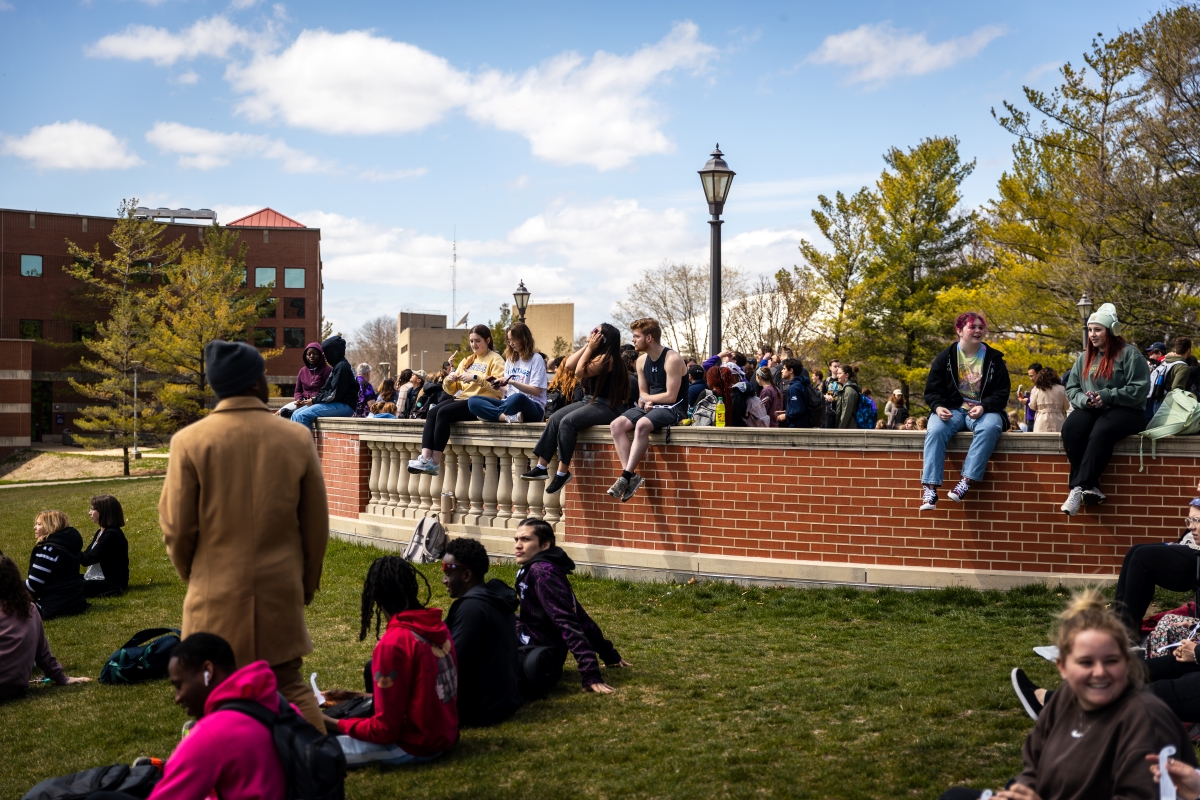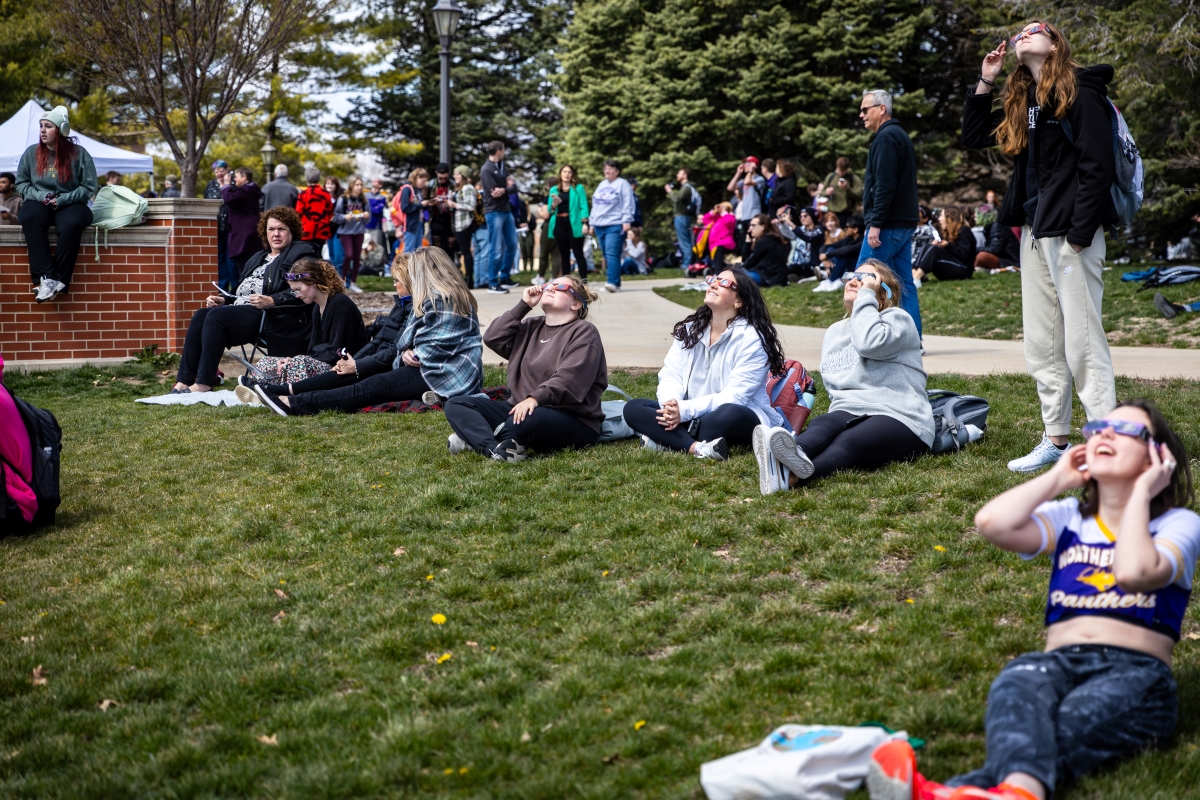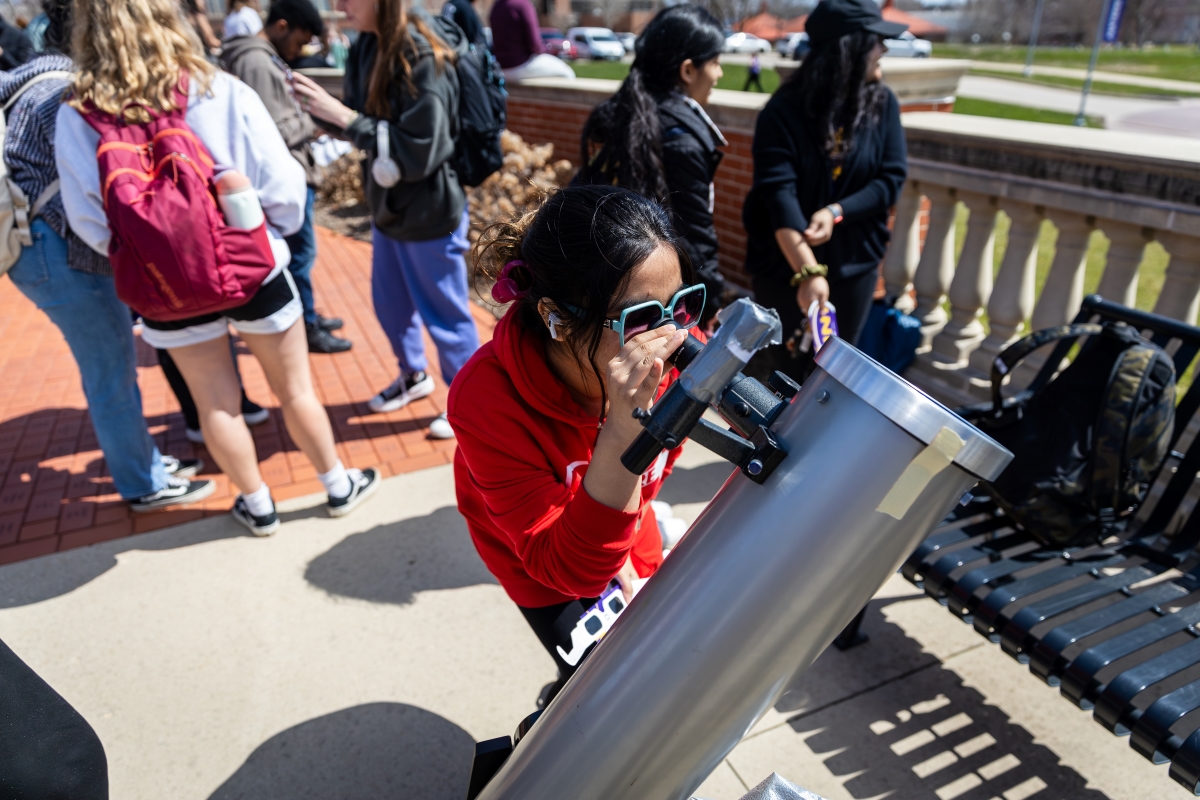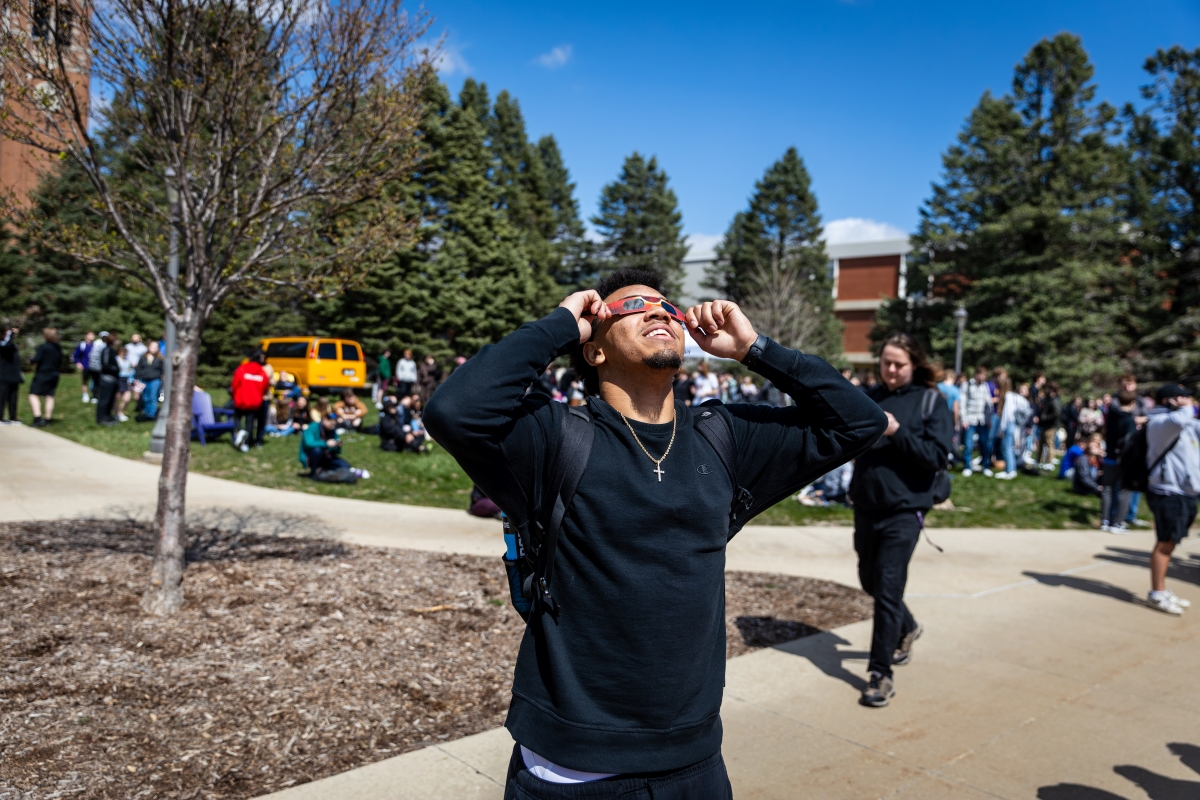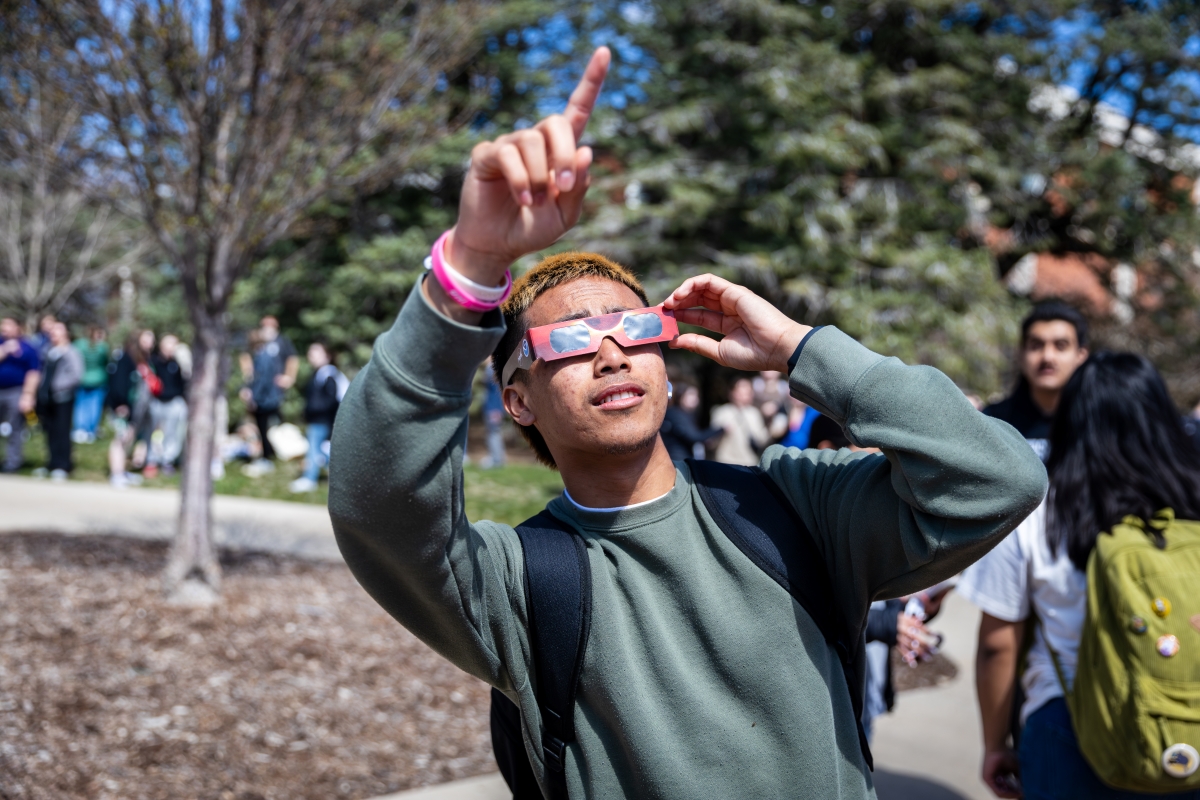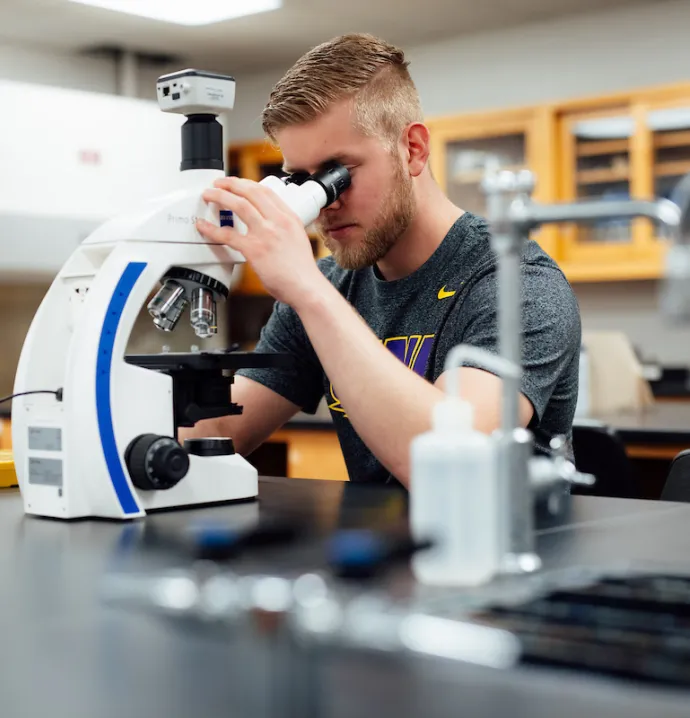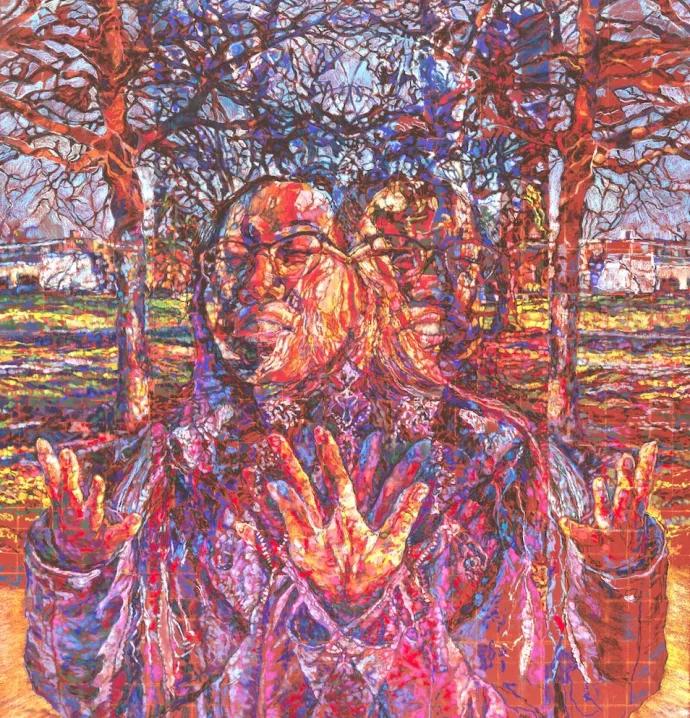UNI professor readies class for April 8 total solar eclipse
UNI professor readies class for April 8 total solar eclipse
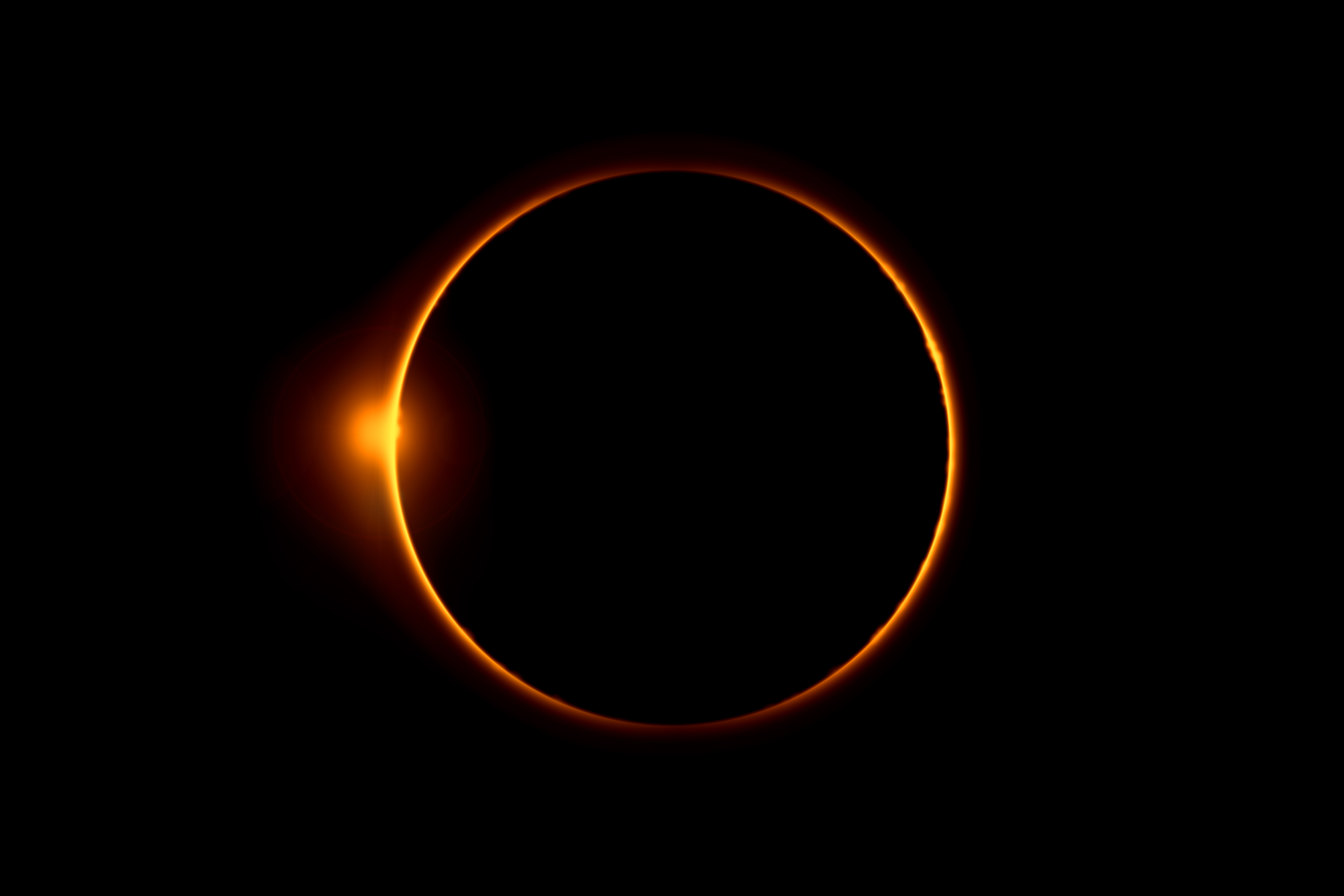
Some people chase storms, but Thomas Hockey, professor of astronomy at UNI, chases something much more rare and short-lived: solar eclipses. At the age of 10, he witnessed his first partial solar eclipse in his hometown of Angola, Indiana. This moment was so influential for Hockey that it led him to study astronomy.
Since that pivotal day, Hockey has made it his mission to see as many eclipses as he can. And he’s been rather successful, having witnessed 10 central eclipses in places like Mongolia and the Andes. For the upcoming April 8 total solar eclipse, Hockey doesn’t need to travel nearly as far. He will be taking 11 UNI students in a van to Vincennes, Indiana, which is the closest point on the eclipse centerline to Cedar Falls. This is the third trip he has taken UNI undergraduates on to see a total eclipse of the sun.
Hockey hopes that everyone can appreciate just how rare and special this is.
“The amazing coincidence of a similar eclipse path only seven years ago may blind people to how rare an easily accessible solar-eclipse path is,” he said. “Normally, one might have to wait a hundred years!”

While total eclipses are not exactly uncommon - they happen on earth every 18 months - there are numerous conditions met by this specific eclipse that make it an exceptional circumstance. Hockey explained that total eclipses of the sun are visible on paths across the earth thousands of kilometers long but often less than 200 kilometers wide. This path may be over the ocean, which is often the case. Even if it crosses land, it may be over some inhospitable region such as Antarctica.
With the April 8 total solar eclipse, the path runs diagonally across the continental United States.
“For most Iowans, a mere day's drive via interstate highway will put them on the path and to a place where there is a 50-50 chance that it will be clear on a spring afternoon,” said Hockey.
Another reason Hockey said this eclipse is such an exciting event is because it occurs on a date near that of the maximum in the 11-year solar activity cycle. This means spectators will be more likely to see features of the sun that are visible to the naked eye only during totality.
Because of all the attention surrounding the event, Hockey believes this could be the most-watched total eclipse in history.
“Iowans who cannot travel to see the total solar eclipse still will be treated to a fairly deep partial solar eclipse,” he said. “While nothing as breathtaking as a total eclipse, a partial eclipse still is worth checking out. The familiar disk of the sun will turn into something that looks like Pacman from the old video game series.”
While Hockey wants people to enjoy the partial eclipse, he cautions viewers to wear proper protective eyewear. Traditional sunglasses won’t protect against the sun’s harsh rays. Rather, you should purchase special eclipse viewing glasses.
Those on the UNI campus can also take advantage of viewing the eclipse through a specially-filtered telescope provided by STEM Support Services at an eclipse viewing open house south of the Campanile. The viewing party can be found between Wright Hall and the Curris Business Building from 12:30 to 3:30 p.m.


